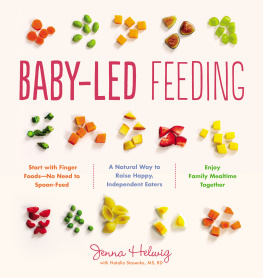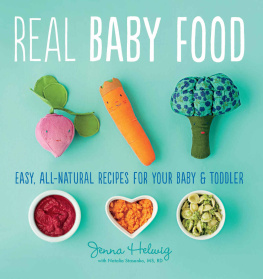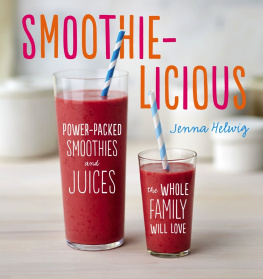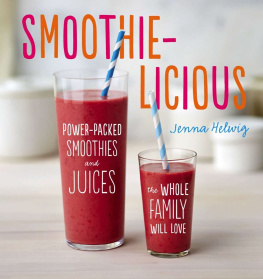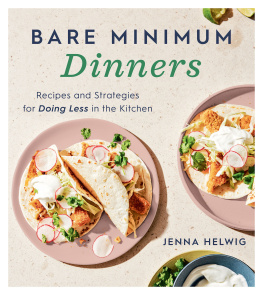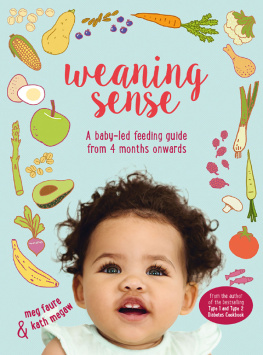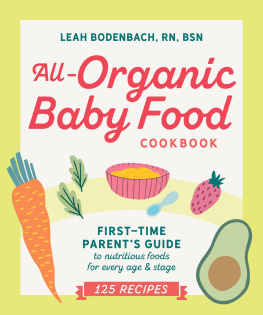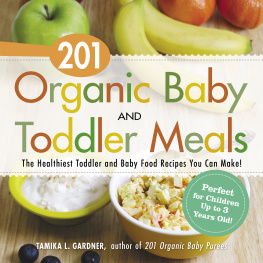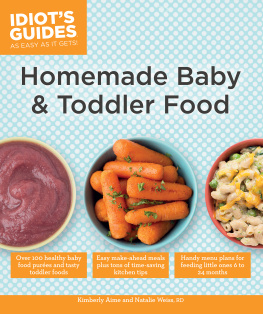Contents

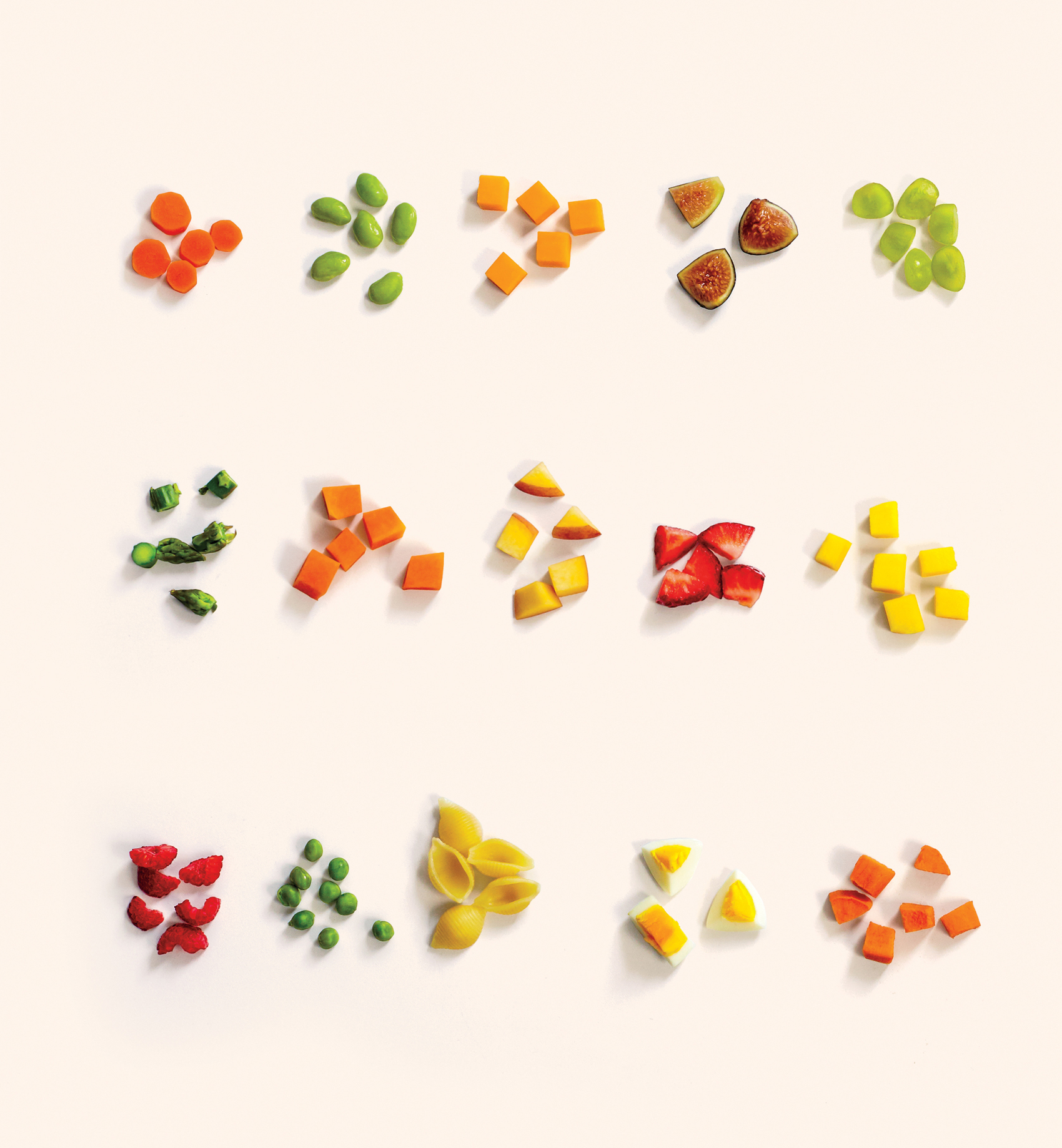
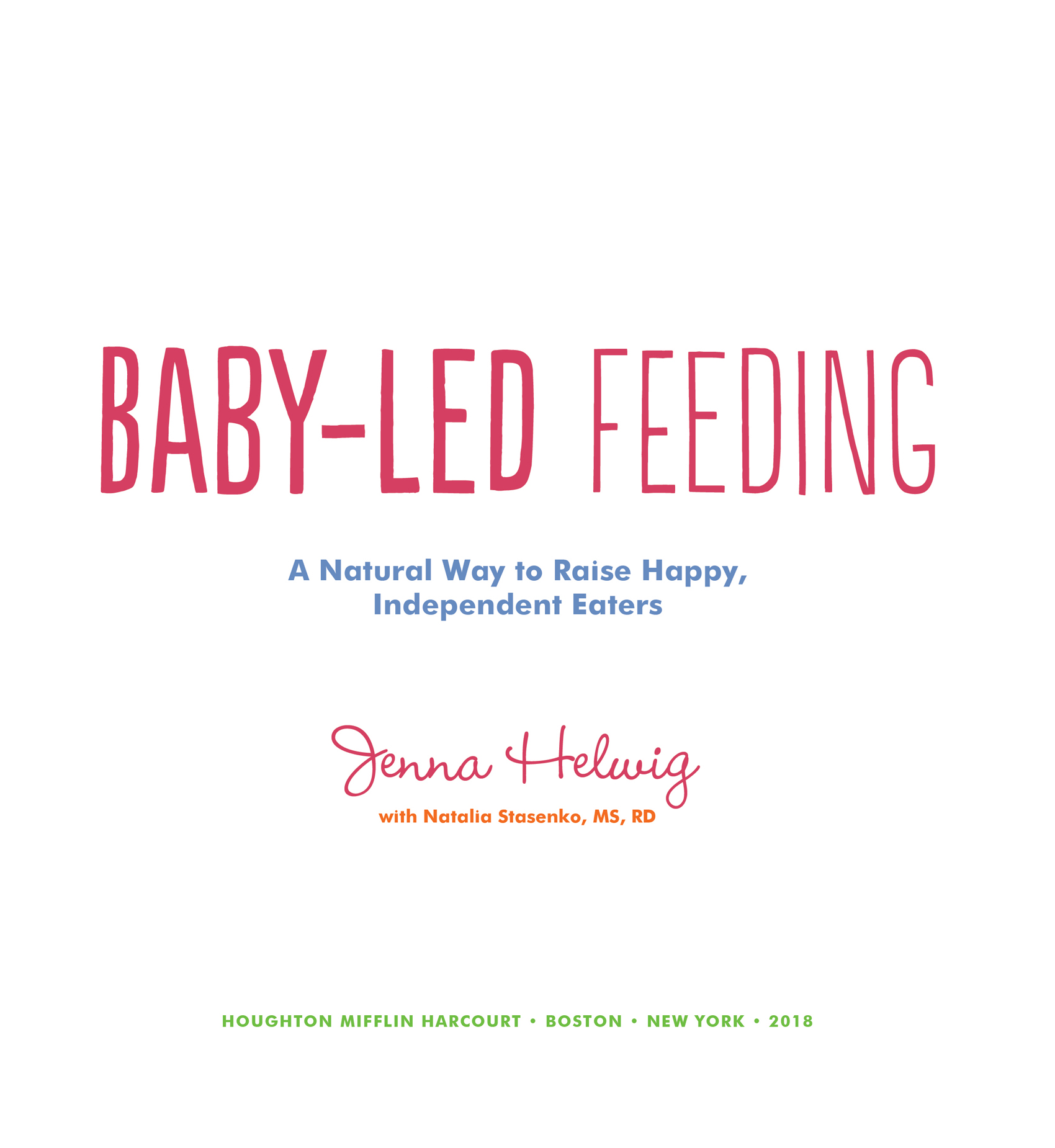
Copyright 2018 by Jenna Helwig
Photography copyright 2018 by Lauren Volo
Additional images: sun on pages : Shutterstock/Artishok; diamond background in chapters two and four: Shutterstock/Curly Pat; dotted background used throughout: Shutterstock/Fribus Mara; watercolor texture as fill for moon and fruit and veggie art: Shutterstock/Roman Sigae
All rights reserved.
For information about permission to reproduce selections from this book, write to or to Permissions, Houghton Mifflin Harcourt Publishing Company, 3 Park Avenue, 19th Floor, New York, New York 10016.
hmhco.com
Library of Congress Cataloging-in-Publication Data is available.
ISBN 978-0-544-96340-5 (paperback); 978-0-544-96342-9 (ebook)
Book and cover design by Alissa Faden
Author photo by Weston Wells
v1.0218
To my parents, with boundless love and gratitude

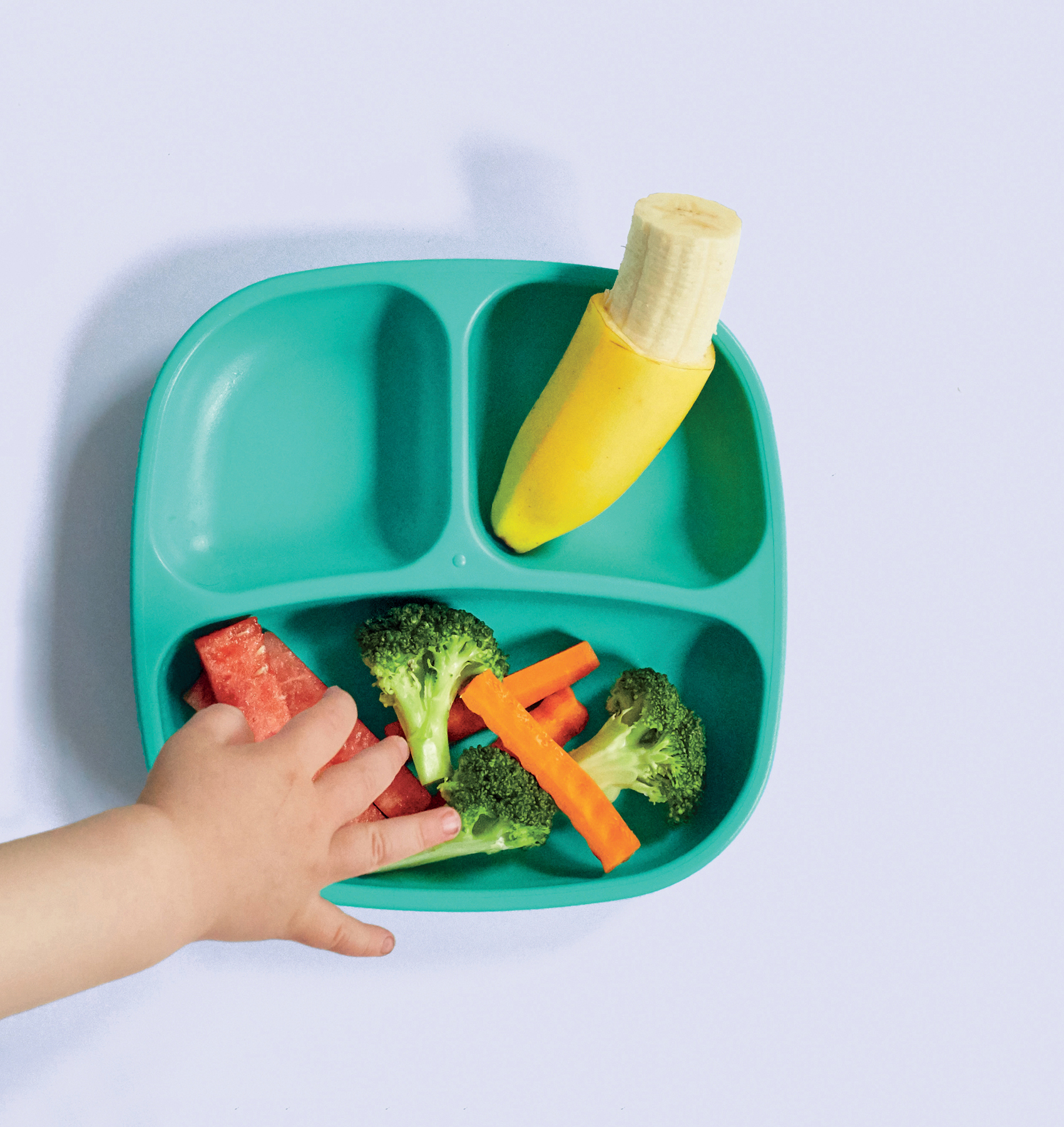
CONTENTS
(6 months and up)
(8 months and up)
(8 months and up)
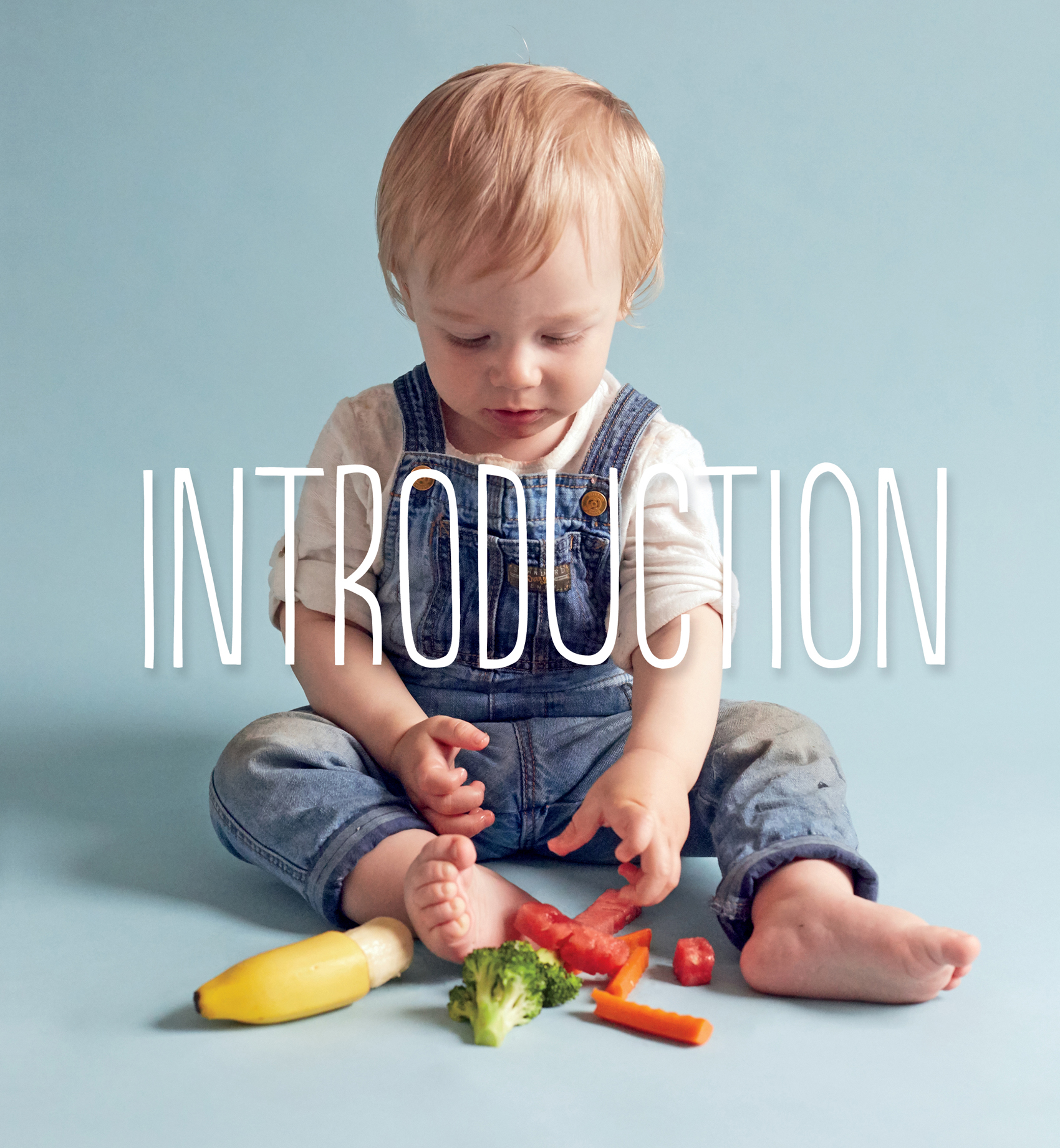
Baby-food makers, blenders, itsy-bitsy jars of mashed foods, batch cooking, and pureing. What if I said you could skip all of that in favor of a more natural, flavor-filled, and family-friendly transition to solids? Welcome to baby-led feeding.
There are so many milestones with a new babysmiling, sitting up, sleeping through the night (hooray!)but one of the most exciting and rewarding is when a baby begins her transition to solid foods. Watching her take her first bites is like a little miracle. Shes being introduced to a wonderful world of flavor, initiated into a human act that will hopefully bring her sustenance and joy her entire life. It all begins with the first bites in the high chair.
Until a few years ago, the mainstream strategy for introducing solids was clear: Start spoon-feeding thin pures between 4 and 6 months, gradually thicken the texture, then make it lumpier, and finally introduce finger foods. Foods were bland, devoid of big flavor that might be considered challenging to a babys palate.
But times have changed. Both the flavor and texture of baby foods have been given an upgrade, thanks to recent evidence highlighting the importance of a quick progression between textures and an early exposure to a variety of tastes. Babies are now eating more complex, flavor-filled dishes than most of their grandparents or parents did when they were the same age.
Another recent change is the promotion of early self-feeding, a natural step toward fostering adventurousness and independence in babies. When I wrote Real Baby Food a few years ago, I recommended introducing finger foods along with pures when babies begin the transition to solid foods. Including finger foods in the diet from early on helps babies develop fine motor skills, sample new flavors, and become accustomed to varied textures. But pures were still the nutritional bedrock, at least for the first couple of months.
But since then, interest in early self-feeding, or baby-led weaning, as it is often called, has soared. New parents are curious about feeding their babies in this very tactile, family-friendly way.
Baby-Led Feeding is an easygoing, friendly guide to helping your baby become a happy, independent eater through self-feeding. The book covers all the nutritional bases, answers new parents most pressing questions, and features easy, delicious recipes for the whole family to enjoy together.
What Is Baby-Led Feeding?
Baby-led weaning is a feeding method recently popularized in the United Kingdom that encourages skipping pures altogether when transitioning babies to solids. There is no buying jars or pouches of baby food or blitzing roasted chicken in the food processor. Instead, babies are allowed to explore, get messy, eat what they can, and set their own pace.
So why is this book called Baby-Led Feeding? First off, weaning is a confusing term. Here in the United States, it means transitioning babies off breastmilk or formula. In fact, for at least the first six months of eating solids, babies should still be drinking plenty of one or the other.
Second, advocates of baby-led weaning sometimes recommend a very strict approach in what should be a very happy, fun, flexible time. They say that if a single pure passes your babys lips, you have failed at baby-led weaning, or that what youre doing really isnt baby-led weaning. If you offer your child a pouch on a particularly busy morning, youve blown it and should revert back to only breastmilk or formula for a couple of weeks before starting finger foods again. To me, this seems unnecessarily restrictive and likely to cause morerather than lessstress.
Baby-led feeding (BLF) is a more flexible, practical approach. Yes, by all means make finger foods the dominant or even exclusive source of solid foods for your baby. But there are good reasons why you may want to offer your baby pures as well, and thats just fine, too. The key is baby-led. When you offer your child finger foods, she decides how much she wants to eat. She picks up the food and puts it in her mouth. If you are spoon-feeding your child, you pay close attention to her cues. Is her mouth open, ready to receive the food? If so, great, feed away. But if her mouth is closed or shes distracted or upset, stop. Follow her lead. Even though shes a baby, she decides if and how much she eats.
The Advantages of Baby-Led Feeding
Although there isnt a lot of research available on self-feeding yet, many experts agree that one of the main benefits of self-feeding is greater satiety responsiveness, the mechanism that allows us to eat until we are full and stop before eating too much. This may lead to better health and weight outcomes in the future.
Another positive outcome is a boost in oral motor development. Research shows that a majority of six-month-olds are able to reach out and grasp food. By offering babies finger foods, parents are providing important opportunities to practice these skills in a developmentally appropriate way.
Additionally, early self-feeding seems to help reduce the risk for picky or fussy eating behaviors in older children. There is more research needed to officially declare this connection, but using finger foods and encouraging self-feeding often means exposure to a greater variety of food, including family favorites and traditional ethnic dishes.
Finally, baby-led feeding is fun! Babies join in family meals from an earlier age, enjoying the first steps of their eating journey, exploring and learning with every bite.
How to Use This Book
So if baby-led feeding is all about babies eating regular family foods, why have a cookbook at all?
One of the key features of this book is the visual guide at the beginning of chapters two and three. These photos show parents and caregivers the safest ways to cut and cook single-ingredient foods for babies feeding themselves. Its natural to have a lot of questions about whats safe and what isnt, and this book addresses the most common sources of confusion.

